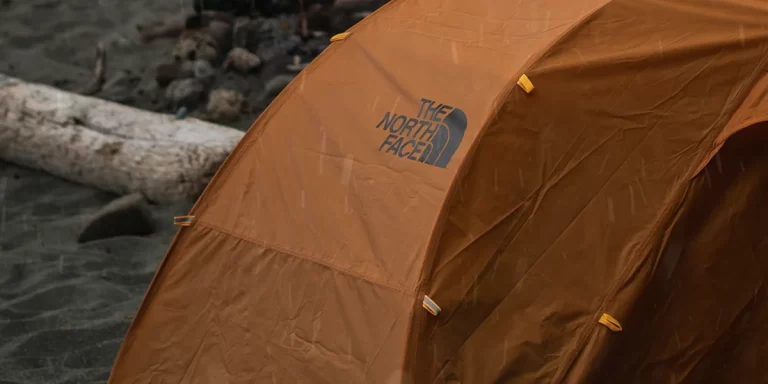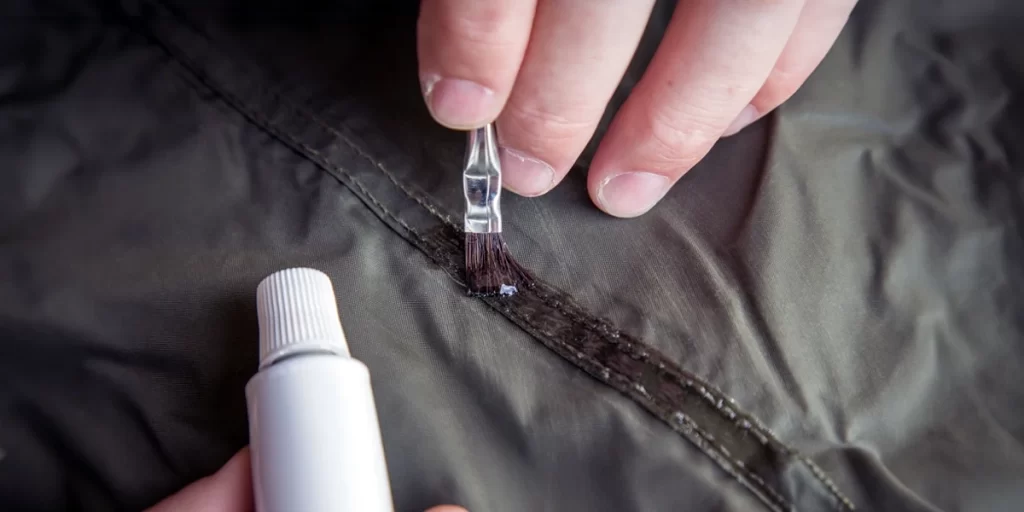

In this post, we’re going to explore the world of tent seam sealing. We’ll break it down into simple steps, so you can learn how to protect your tent like a pro.
No complicated jargon or technical terms – just straightforward advice to ensure your tent keeps you dry and comfortable on your outdoor escapades.
Interested? Let’s get started.
Your tent is made of stitched-together sections, forming seams. Think of these seams as puzzle lines; without protection, they can allow rain to leak inside.
Here’s the deal: Some tents come from the factory already seam sealed, meaning they have that protective shield. Others might need extra sealing, especially those from smaller companies. But here’s a pro tip: even if your tent comes pre-sealed, it’s a good idea to reseam the seals regularly because they can wear down over time.
Now, let’s talk about the different types of seam sealers you can use to fortify your tent’s seams. Imagine these sealers as the superpowers that keep your tent waterproof:
Tip: You can discover the ideal seam sealer for your needs at REI.
Before you dive into seam sealing, there are some important steps to get everything ready. Think of this as the pre-adventure checklist for your tent:

Now, let’s get down to business and explore how to seal those tent seams effectively. Here’s the step-by-step process to transform your tent into a waterproof fortress:
Tip: You can also use seam sealer to fix tiny holes in the tent fabric.
Interested in budget-friendly tent seam sealing? Learn how to make your own DIY seam sealer with these materials and steps:
What You’ll Need:
How to Make Your DIY Seam Sealer:
This DIY solution can save you some cash, especially if you have multiple gear pieces in need of repair. Plus, you can use it to seal other foul-weather gear like rain jackets, pants, and mitts.
In this guide, we’ve simplified tent seam sealing, offering clear steps to keep your tent cozy and dry during outdoor adventures. Whether your tent is pre-sealed or not, regularly resealing the seams is a wise practice.
We discussed sealer types, prep, and the process, even sharing a budget-friendly DIY option. With these tips, you’re set for your next outdoor adventure, keeping gear in great shape and staying dry.
If you’re struggling to seam seal your tent and in search of a new ultralight shelter, explore our TOP 5 guides for the lightest options available.
The durability of seam sealing typically spans one camping season, approximately 3 to 4 months of continuous outdoor use. However, for the best results and long-term waterproofing, it’s recommended to inspect and potentially reseal tent seams every 1 to 2 years, depending on your usage frequency and exposure to challenging weather conditions. This proactive approach ensures that your gear remains in top-notch, waterproof condition throughout your outdoor adventures.
Modern tents usually feature factory-applied waterproof coatings, offering reliable protection for about 3 to 4 years. Over time, exposure and wear can reduce waterproofing effectiveness. To maintain it, inspect and reapply waterproofing products or seam sealing as needed after each camping season. This keeps your modern tent ready for dry outdoor adventures.